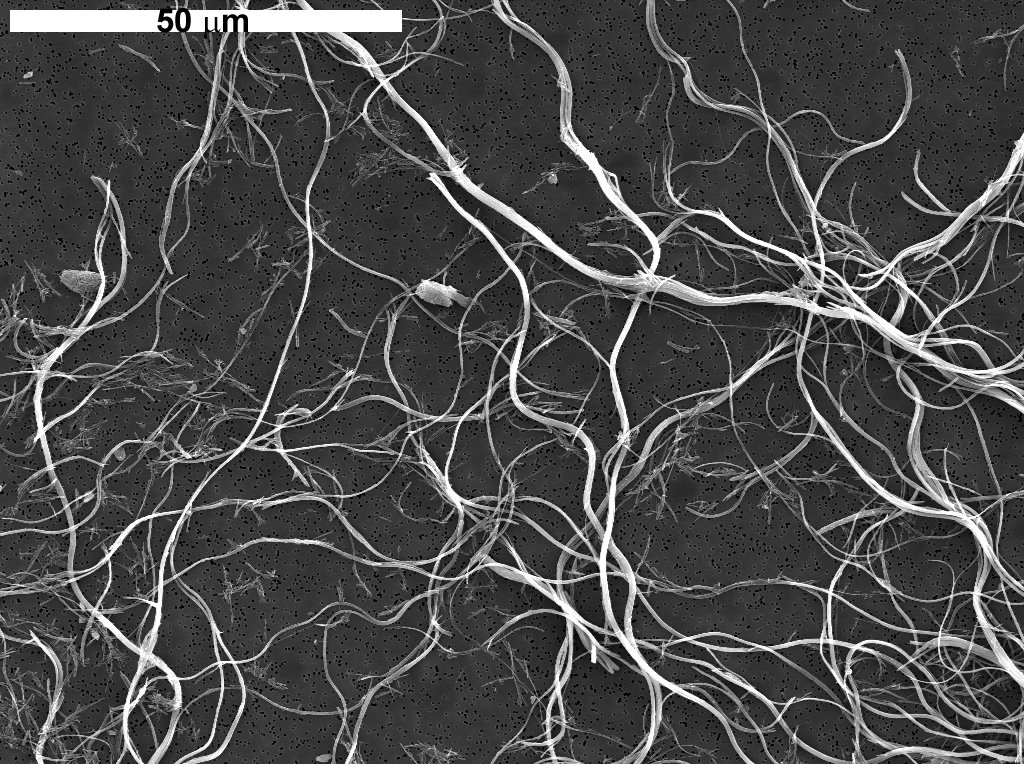What is asbestos and why is it dangerous?
Asbestos is the name, or more specifically, the technical umbrella term for a group of naturally occurring mineral fibres belonging to the so-called silicates. Together, these silicates are the principal component of the Earth’s crust. The crystalline structure of the asbestos minerals allows them to roll up, forming nanotubes or very thin needles with a diameter of no more than a few nanometres. Compared to a human hair, these minerals can be between 1,000 to 10,000 times thinner.
As a result of their particular shape and small size, the fibres can be easily inhaled into the lungs where they then penetrate the organs’ tissue. Once this occurs, it is difficult for the body to expel the fibres.
Until they were finally banned in the European Union and North America, asbestos products were popular in the construction industry due to their durable and fire-resistant properties. In addition to these properties, they are also easy to process and continue to be produced in large and low-priced quantities around the world.
Illnesses such as asbestosis or cancer caused by asbestos have invariably impacted individuals who inhaled asbestos fibres in high concentrations (> 1 million fibres per cubic metre) for many years for up to 8 hours a day.
Glass fibres or artificial mineral fibres (AMF) are comparatively thick and large. They can also be inhaled, but they do not travel very far into the lungs, nor can they penetrate the tissue very easily. They are therefore considered to be less dangerous. However, one should not underestimate these fibres.
The dosage makes the difference
“The dose makes the poison” is a common saying. We are exposed to pollutants and radiation on a daily basis, but our bodies can only “process” them to a certain degree. We must therefore assign limits to pollutants and radiation (including asbestos). A value of less than 500 fibres per cubic metre of air is considered safe. In fact, the so-called background contamination level, i.e. the usual number of asbestos particles in the air, is approximately 100 fibres per cubic metre.
Avoid exposure
In general, however, one should avoid being exposed to pollution as far as possible. That is why we are taking care to implement measures to protect you at the University of Konstanz as early and as diligently as possible. This includes temporarily closing off building sections or rooms where asbestos is found or released.
The following pages provide you comprehensive information about the nature and origin of asbestos, how it is detected, legal principles and regulations as well as the current situation at our university.

